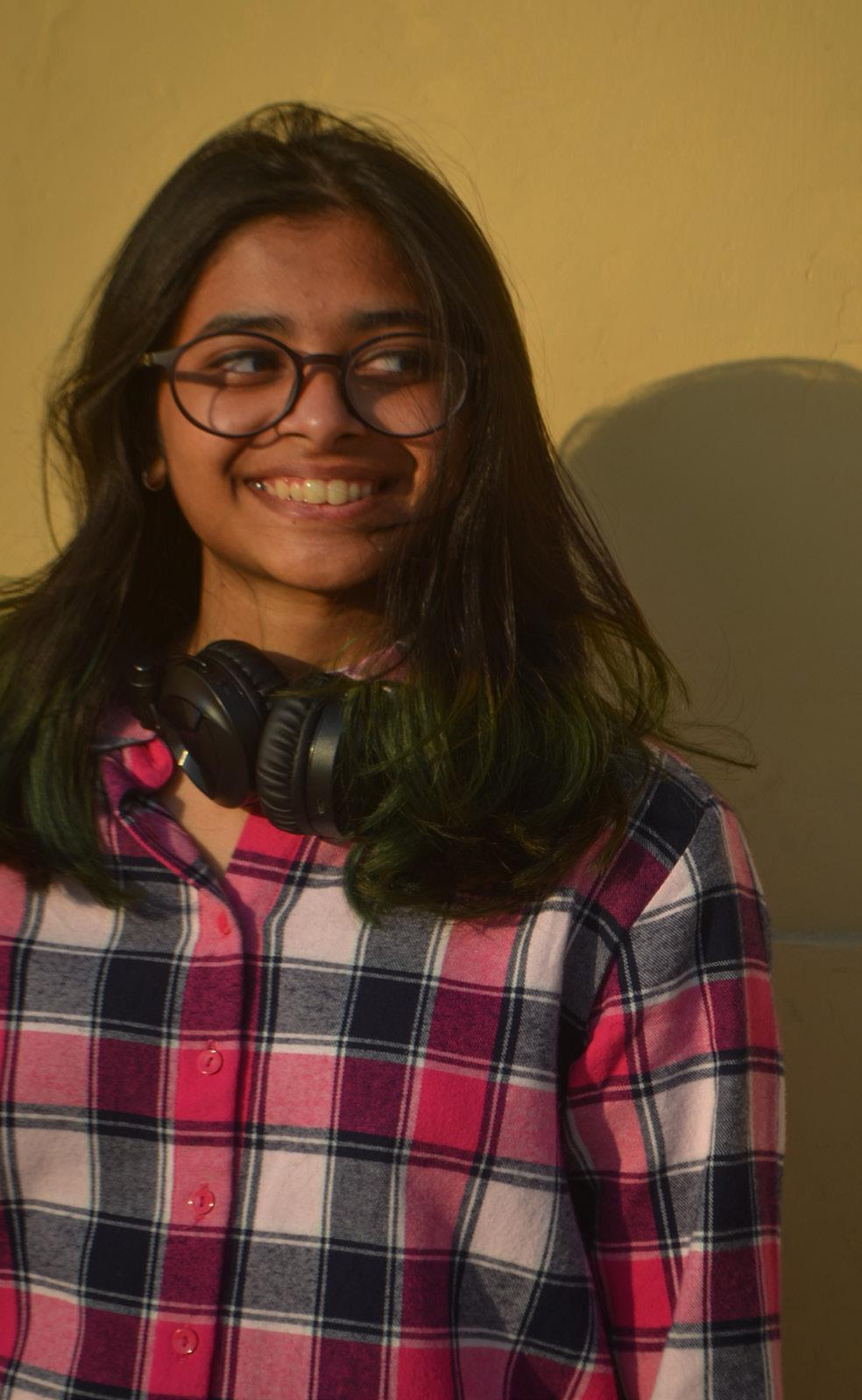 Aadya Singh
Aadya Singh

Personal Information
Date of Birth : 28/11/1999
Permanent address : A-29, Unit-4, Nirala Nagar, Lucknow-226020, Uttar Pradesh, India.
address : AGirls Hostel - 1, SPA Bhopal Campus, Neelbad road, Bhauri, Bhopal - 463020, Madhya Pradesh, India.
Contact Information
: 2019barc087@spab.ac.in aadyasingh123@gmail.com
number :
Temporary
Email
Mobile
+91 8808380100 +91 7392082811
Education :
La Martiniere Girls’ College, Lucknow 2004 - 2018
College Prefect (2017 - 2018) School of Planning and Architecture, Bhopal 2019 - Present
Skills
Architectural Softwares : Drafting
Autocad
3-D Modelling Sketchup Archicad
Other Skills Dance - Bharatnatyam Senior Diploma (12 years)
Hobbies Photography Architectural Potraiture Painting Watercoulour Acrylic
Post Production Photoshop Illustrator Lightroom Sport - Tennis National Level (8 years) Languages Hindi English
Academic work Fruit Shop (Semester 2)
Primary Healthcare Centre (Semester 3) School (Semester 4) Stadium (Semester 5) Mid-rise Housing (Semester 6)
5 Star Luxury Hotel (Semester 7 - ongoing)
Competitions
2020 Berkley Essay Prize Essay writing 2021 UNI Bookmark 2.0 Library Design NASA Landscape Trophy Landscape Design 2022 Biocity Futuristic City Design
Workshops
2020 Karwaan Photoshop Presen tation
Software Presentation 2021 Karwaan Landscape Design Landscape Design eDX Ergonomics in Design
Auroville Earth and Bamboo Hands on construction 2021 Udemy Lumion Rendering Software Work Experience 2021
Architectural Intern at ARCH-EN DESIGN
One month internship under Ar. Ashok Kumar


CONTENTS 01 02 KOLKATA INTERNATIONAL Kolkata West Bengal GURUKUL Bhopal Madhya Pradesh


03 04 KITABGARH Kalasar Rajasthan OTHER WORKS Bamboo and Earth Workshop Photography

01 | KOLKATA INTERNATIONAL Stadium | Academic | Individual

project details
Typology : Stadium

Location : Rajarhat, Kolkata, West Bengal, India
Softwares : Autocad, Sketchup, Photoshop, Lightroom, Lumion
Task : To design a field and track stadium of visitor capacity 5000, following standards and byelaws of given location. Features to be included : • Ramp access to seats
site plan






02 | GURUKUL School | Academic | Individual

project details

Typology : Junior School
Location : Kaliyasot Dam, Bhopal, Madhya Pradesh, India
Softwares : Autocad, Sketchup, Photoshop, Lightroom, Lumion
Task : To design a school having classes upto 5th Grade with a capacity of 80 students per grade.
Total capacity : 400 students. Strict adherence to standards and byelaws of the given location.
plan

site
the primary inspiration of the design comes from the gurukul concept of education, where the teacher sat under a tree and the pupils gathered around the tree.

a square block is added after area programming to have enough built up area. the square block is the academic block and circular is the activity block.

mass from the central areas of the two blocks is subtracted to give courtyard that allow passive cooling to take place.
a quarter from the frontal section of the circular block is also sub tracted to provide a clear access to the building and open up the building to the north light.
the amphitheatre provides a space for performances, assemblies and other gatherings which are a regular occurring in education institutions.
the amphitheatre provides a space for performances, assemblies and other gatherings which are a regular occurring in education institutions.
CONCEPT DEVELOPMENT 01 02 0403 05 06






03 | KITABGARH Library | Competition | Group of 4

project details

Typology : Public Library
Location : Kalasar, Jaisalmer, Rajasthan, India
Softwares : Autocad, Sketchup, Photoshop, Lightroom, Lumion
Task : To design a public library serving a population of 200 people. The library must have seperate sections for 4-8 genres. It should compliment the context of the given site.

site plan




EARTH AND Bamboo workshop

LEARNING ABOUT EARTHABOUT THE WORKSHOP
The earth and bamboo workshop is jointly conducted by Auroville Earth Institute and Bamboo Centre in Au roville. The hands-on workshop gives an insight into the research work being done at both the institues. It is a week long course that illuminates about two non conventional building materials that are emerging as very promising materials for sustainable and zero waste architecture. The purpose of these workshops is to create awareness, impart knowledge and inspire young architects to fur ther research on these materials.
Auroville Earth Institute is the centre of research in India, that aims to make mud structures, completely sustainable, financially viable and a popular practice. They have designed machines and techniques that make mud a promising material of the future. They have also devised tech niques that can be used for the rapid building of structures for disaster management.

Bamboo Centre is another budding centre in India. They have studied techniques of bamboo construction from all over the world and India as well. The tensile strength of bamboo is what makes it a promising building material. The techniques evolved at bamboo centre and parallel to none in the country. They have been able
Making of mixture one : It is the more primitive mixture, which derives its origin from mud houses commonly found in rural India, even to this day. The mixture includes mud, husk and water in rough proportions. It is mixed usingfoot or hand and has to be used quickly beforedrying starts. This mixture is used to madea cobb wall or adobe bricks, which are bymodern standards considered to be temporary structures.
Making of mixture two : This mixture was made after tons of research done at the earth institute itself. This mixture consists of mud, cement and water (8:1:2 ratio). The mud used in this mixture is tested and processed to make it a suitable building material. This mixture has fixed proportion unlike the previous one, which is eyeballed by the construction workers.
Making of adobe bricks : the earth mixture is put into brick size moulds and left to dry in the sun.




Making of adobe wall : adobe bricks that have dryed are precisely placed using a mortar made of processed earth and cement
Making a CSEB wall Compressed Earth Blocks are precisely placed using the same mortar of earth and cement.
Making a cobb wall : The process involves making of blobs of the earth mixture and roughly placing them as close to the on top of each other, so as to form the desired wall.
Making a rammed wall : A frame is fixed according to the size of the desired wall and a mixture of earth and cement is rammed using a pestle like rod. The wall is then cured and dryed until hard.

The finished rammed earth wall, it is a technique native to Leh Ladakh in India.

EARTH AND Bamboo workshop
LEARNING ABOUT BAMBOO
Curing and cutting of bamboo: Bamboo needs to cured in boric acid which increases its life to 50 years. It can then be used to create long lasting structures and prevents it from rotting of all kinds. It can be cut amnuakky and by machine. Seen here, is the process of manual cutting of bamboo into smaller pieces. The smaller pieces are used to create walls, and no structural elements of a bamboo structure. A circular tool with blades as big as the diam eter are placed at angular distances, creating almost equal pieces of bamboo is used to cut.
Bending of bamboo : Bamboo can be bent to a certain angle to create unique forms. The pro cess of bending involves heating of bamboo and pushing it upto the desired shape. Bent bamboo can be used as beams and col umns for structures having an organic form.

In the given picture bamboo is being heated using a flame thrower and is being bent by the students and workers for a circular cottage which was being built on site.


To improvise this process and make it more precise, a machine is also being built at the centre, which will emit all the manual labour involved.
Bamboo comes in all shapes and sizes, to get uniformity, it can be easily processed using basic contruction machines. Here, we can see bamboo being scraped by a metal scraper. This type of processed bamboo is mostly used to make strong joineries. During the workshop we were taught to make the Fish Mouth Joint, which is the most useful and common type used to make structures.
Making of the fish mouth joint : Bamboo nails and pegs are used to fix two pieces of bamboo to each other in this technique. The joinery is achieved using basic industrial equipment.
Making of a bamboo structure : A cottage was designed by the participants using bamboo as reinforcement.



Making a bambooo structure The bamboo columns and beams are joined using fish mouth joinery. The proposed structure is a cottage.
Making a bamboo wall : To the columns and beams of the struc tre, sliced bamboo pieces are attached that hold onto mud plaster.



Plastering of a bamboo wall : A mixture of mud, cement, cobb and water is used to plaster the bamboo wall. It closes the air gaps and makes the wall opaque and complete.
A finished plastered wall for the cottage in construction process.
O T O G
A P

P H
R
H Y


I

U R A
A R C H
T E C T
L


T R A I


P O
T U R E



 Aadya Singh
Aadya Singh




























































